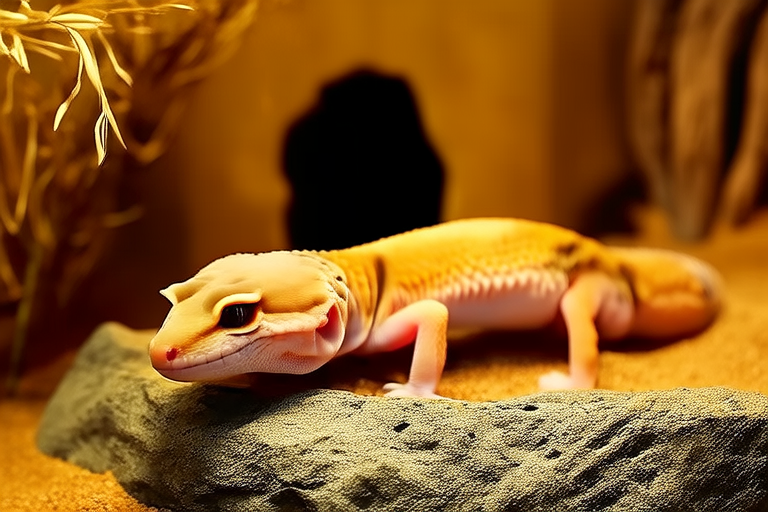How to Set Up the Perfect Habitat for Your Leopard Gecko Companion
Welcome to the wonderful world of leopard geckos! These charming reptiles are popular pets because of their relatively low maintenance needs and unique personalities. Setting up the perfect habitat for your new friend is crucial for their health and happiness. This guide will walk you through everything you need to know about creating a safe, comfortable home for your leopard gecko.
Choosing the Right Tank Size
The first step in setting up your leopard gecko’s habitat is selecting the right tank. Leopard geckos are small creatures, but they still need adequate space to move around and explore. A 10-gallon tank is suitable for one adult leopard gecko, while a 20-gallon tank provides more room for two geckos or additional decor. Always opt for a glass or acrylic tank with a secure lid to prevent escapes.
Appropriate Substrate Options
Selecting the right substrate is important for your gecko’s comfort and well-being. Avoid loose substrates like sand or wood shavings, as they can cause impaction if ingested. Instead, choose reptile carpet, paper towels, or a specially designed paper-based bedding. These substrates are easy to clean, safe for your gecko, and promote good hygiene.
Essential Heating and Lighting Requirements
Leopard geckos require a temperature gradient within their enclosure to thermoregulate. Use a heat lamp or ceramic heat emitter on one side of the tank to create a warm basking spot between 88°F and 95°F (31°C – 35°C). The cooler side should be around 75°F (24°C) to allow your gecko to cool down when needed. A thermostat helps maintain consistent temperatures. Leopard geckos don’t require UVB lighting, but a low-wattage red bulb can provide gentle night-time illumination for your enjoyment without disturbing your gecko’s natural sleep patterns.
Hiding Spots and Decorations
Your gecko needs hiding spots to feel secure and reduce stress. Incorporate caves, tunnels, and cork bark pieces into the tank. Arrange these items so that there are multiple options at different heights. You can also add plants, rocks, and branches for enrichment. Just make sure all decorations are securely placed and safe for your gecko to climb on. Providing variety in your gecko’s environment encourages exploration and mental stimulation.
Feeding Areas
Designate a specific area within the tank for feeding to help establish a routine and reduce competition among multiple geckos. Place food dishes or platforms in this designated space. Avoid placing food directly on the substrate, as it may lead to ingestion of harmful particles. Keep the feeding area clean by removing uneaten prey promptly.
Maintaining Humidity Levels
Leopard geckos thrive in environments with moderate humidity levels between 30% and 40%. To achieve this, mist the tank lightly once or twice a week, focusing on the cool side of the enclosure. Providing a shallow water dish also helps maintain humidity. Monitor humidity levels with a hygrometer to ensure they stay within the recommended range. Adjust misting frequency or add a humid hide box filled with moistened sphagnum moss if necessary.
Cleaning Schedules
Regular cleaning keeps your gecko’s habitat clean and free from harmful bacteria. Spot clean daily by removing waste and uneaten food. Deep clean the entire tank every two weeks. This involves removing all substrate, decorations, and accessories, scrubbing them with a reptile-safe cleaner, and rinsing thoroughly. Replace the substrate afterward. Clean water dishes daily to prevent bacterial growth. Regular cleaning promotes a healthy environment for your gecko.
Safety Tips
To ensure your gecko remains healthy and happy, follow these safety guidelines:
- Avoid handling your gecko during the day when they are more active.
- Wash your hands before and after handling your gecko to prevent the spread of germs.
- Keep the tank away from direct sunlight and drafts.
- Monitor your gecko’s behavior for signs of illness, such as lethargy, loss of appetite, or changes in stool consistency.
- Provide fresh water daily and change it regularly.
- Supplement your gecko’s diet with calcium and vitamins as recommended by your veterinarian.
By following these tips, you’ll create a safe, healthy environment for your leopard gecko companion.
Setting up the perfect habitat for your leopard gecko takes time and attention to detail. However, the rewards of watching your gecko thrive in its new home make the effort worthwhile. Remember, each gecko is unique, so pay close attention to your pet’s behavior and adjust their environment accordingly. With proper care and attention, your leopard gecko will live a long, healthy, and happy life. Happy gecko keeping!
